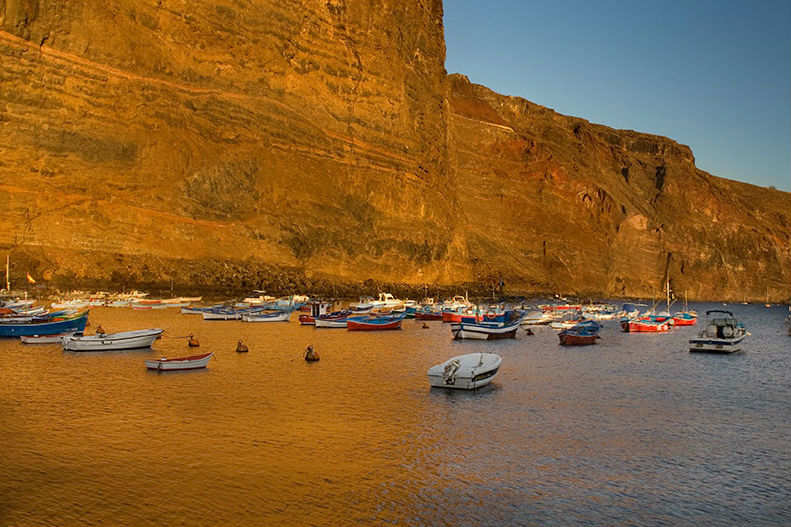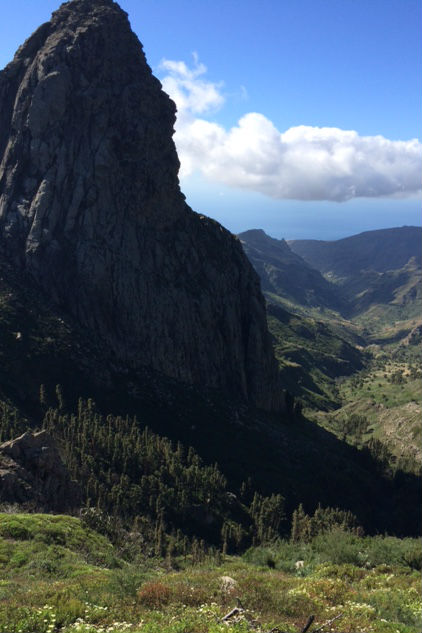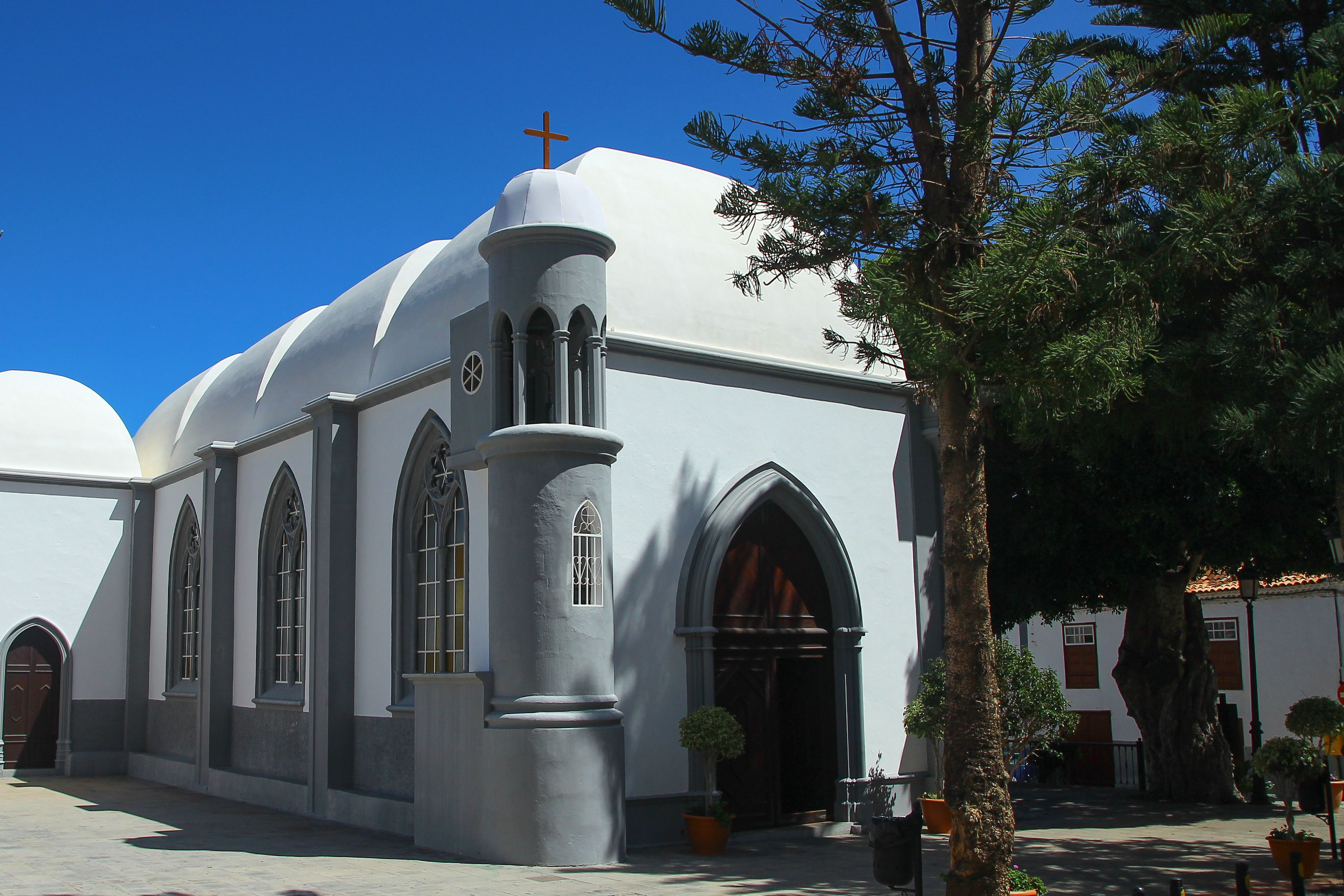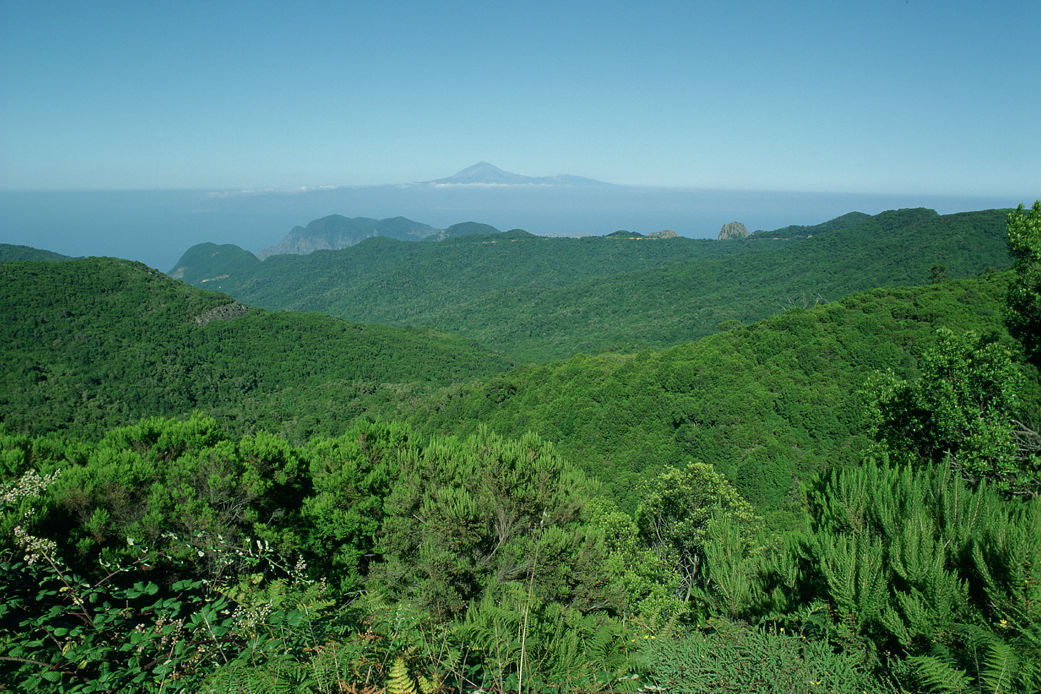La Gomera: the Canary Islands' best kept secret
The Canaries have a reputation for being a bit basic - but with lush rainforests, whale watching and volcanoes La Gomera is a hidden gem.

The Canaries have a reputation for being a bit basic - but with lush rainforests, whale watching and volcanoes La Gomera is a hidden gem.
The island hangs off the Atlantic coast of Africa like it’s about to drop from the edge of the earth. We arrive after a four-hour flight followed by a 45-minute ferry ride from Los Cristianos port in Tenerife. On approach, the island rises from the ocean, its top mysteriously covered with cloud, like something from an episode of Scooby-Doo. Far away from the boardwalks and burger bars of the clichéd Canary Islands, this is a well-kept secret. Welcome to the home of 'turismo slow', as they call it, where getting away from it all takes on a whole new meaning. It was a dawn start, but by the time we get to the luxurious Parador de la Gomera hotel, it’s dark. we devour fresh cod, huevos revueltos (scrambled egg) with chorizo and a bottle of rioja. The friendly staff are encouraging when I try out my poor Spanish. I’m delighted – this never happens on the mainland.
In the morning, we awake to the sound of birdsong from the gorgeous garden – hibiscus, red hot pokers, bay trees, yuccas, cork trees and cacti sit alongside a gurgling fountain in the central courtyard. First up is a swim in the pool – it’s not heated, and it’s low season, but we are hardy Brits and jump in anyway. We’re soon rewarded for our bravery with a dip in the hot tub, which looks out across the beach from where Columbus set sail for the Americas in 1492. (The hotel boasts a picture of Beatriz de Bobadilla, the widow of the ruler of la Gomera, who played host to Columbus for a month before he left – the insinuation being that she gave him more than just supplies of water and food for the journey. Chortle.) After a shower my hair feels amazing – it turns out that the whole island is fuelled by water from its very own rainforest.
On this side of the island, the view of Mount Teide – Tenerife’s 3,000ft, snowcapped volcano – is omnipresent. Once on the road, you are also immediately stunned by the dramatic landscape of La Gomera itself. As with all the Canaries, it’s volcanic, having been created from the lava spewed into the sea by volcanoes over millions of years. It’s shaped like a giant lemon squeezer, with ravines radiating out from the central peak, dotted with (mostly abandoned) terraces covered in aloes, palms and prickly pears. when it comes to directions there’s no left or right, only up or down.

We head first for Hermigua, a fertile valley planted with bananas and avocados, and look at the remaining pillars of El Pescante, where bananas used to be hoisted on to ships headed for ports such as london’s Canary wharf (named after the Canary Islands – who knew?). From here the Telemacha would set sail – boats taking refugees from Franco’s fascist regime to Venezuela. During the Franco era, workers were treated as peasants, paid in bonds not cash, and forbidden from learning to read or write. There was a desperation to escape that sounds familiar in this day and age.

From here the road twists around to Agulo, all cobbled streets and typical Canarian architecture with courtyards painted in white, yellow and blue and a classic church. We stop for lunch at the Mirador de Abrante restaurant for two reasons. Firstly, a glass box cantilevered out over the clifftop offers the best (if scariest) view imaginable. Second, the waiter and waitress demonstrate Silbo, the whistling language that is an integral part of the Gomeran heritage. Centuries old and used for communicating across the deep valleys, it was outlawed by Franco and nearly died out before being made compulsory in schools. now it’s classified as a Unesco Cultural Intangible Heritage. As we polish off our tasty lamb and couscous, the staff give us a demo.
The next day, we head for Santiago on the south coast, but must drive first to the centre of the island and out again. Here we see Los Roques, the fascinating two-million-year-old volcanic remains, showing where the crater existed. Now it’s carpeted with wild flowers, which the huge network of walks runs through. La Gomera is big with ramblers – we spot anoraks and walking sticks a go-go – and soon discover that Angela Merkel is one of them, staying at the Hotel Jardin Tecina for her hols! we, meanwhile, hang out at La Chalana beach bar. It’s like going back in time to 1985, when it was set up by owner Teresa. All mosaic tiles and Bob Marley, it has a hippyish vibe where you can sit and stare out to sea all day. La Gomera has been on the hippy trail since the Sixties when Americans hid here to avoid conscription into the US army during the Vietnam war. A small road leads to Playa del Medio, one of three beaches mostly used by locals, where camper vans are parked up and swimming costumes are optional. We jump among the waves wondering if Merkel’s going to turn up, shed her anorak and join us.

The next day, we visit the rainforest. This is the very heart of the island, the provider of all its water, which has remained unchanged for millions of years. The trees of laurel, juniper, myrtle and ‘tree heath’ (heather in tree form) hang with old man’s beard, which only grows in the cleanest of places, and are coated with moss and fungi; ferns and succulents grow everywhere and the whole place is cut through with streams and dripping with water. It’s as far away from the dry landscape of nearby Fuerteventura and Lanzarote as you can imagine. It’s also cold – around 12 degrees – compared to the 23°C we left behind on the coast.
We are becoming quite blasé about the incredible views everywhere, but aren’t prepared for the scale of Valle Gran rey on the other side of the island. The Hotel Gran Rey is a classic Spanish resort hotel with rooms spanning three storeys overlooking either the Atlantic or the valley behind, and it’s a pleasing view of pastel houses dotted with green terraces. The rooftop swimming pool looks out to the ocean and there’s a large unpretentious buffet in the evening – although you can also eat at one of the many, very reasonable restaurants nearby. Overall, the cost of enjoying oneself in la Gomera is extremely cheap compared to the Mediterranean – a large salad with fried octopus is €9, pizzas ,€7, coffees, €1 and a huge (they pour generously here) glass of vino blanco, €1.50. On the beach a round of four homemade ice creams, which at home would cost the price of a small car in summer, is €5.
The following day, we set sail on the Tina, a tourist boat that takes us whale and dolphin spotting. The sea is rather choppy, so everyone’s feeling a bit queasy. But the sight of pilot whales and bottlenose dolphins (which live permanently around these islands) playing next to the boat soon takes our minds off of it. After an hour we stop in a cove by La Calera, which is only accessible via boat or foot, and drop anchor. We all go for a swim in the sparkling water, where you can see right to the bottom even though it’s around 30ft deep. Meanwhile, the captain griddles fresh tuna served with salad and Canarian new potatoes, which is included in the trip. Sailing back, we hug the coast and can see the layers of volcanic eruption striped in the rocks. Back on dry land, we head for Playa de Vueltas. This is the harbour and the best beach for safe swimming, as it’s sheltered and calm. The black sand is at first disconcerting, but the water is extraordinary – crystal clear and blackish aquamarine. Little boats bob about, while someone fishes a harmonica from his pocket and starts playing. we are becoming so relaxed, it’s hard to move, but we drag ourselves back to the hotel for sundowners on the balcony to see the atlantic all lit up in gold.
Next morning, the clouds burn off and we head to Playa del Inglés, the prettiest part of town with bougainvillea-filled gardens, pink painted apartments and banana groves. But a tattered red flag warns of treacherous currents and quashes any idea of a morning swim. Instead, we sit in one of the stone ‘nests’ for protection from the wind, and watch the waves crashing on to the black rocks, backdropped by the table- shaped mountains (La Merica and Tequergenche) behind us. By the end of our trip, we are seriously chilled – and when I spot a Burger King sign at Tenerife airport, I realise I haven’t seen a brand name in a week. la Gomera isn’t the place to go for nightlife or shopping, but if you want to glory in the forces of nature and shower in rainwater, get on the ferry and go.
Return flights to Tenerife in February with Ryanair cost from around £58 return. Book with Skyscanner for the best deals. The ferry to La Gomera costs about £61 return. Stay at Parador de La Gomera, where a standard twin room starts from £176 per night, including breakfast. Hotel Gran Rey offers double rooms from £52 per night (room only), or £62 per night on a half-board basis. For more information about Garajonay National Park and the restaurant Mirador de Abrante, visit lagomera.travel. For details about whale watching, go to excursiones-tina.com.
Celebrity news, beauty, fashion advice, and fascinating features, delivered straight to your inbox!